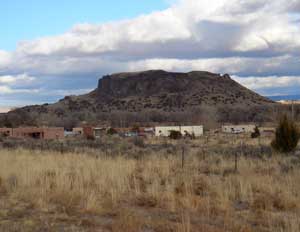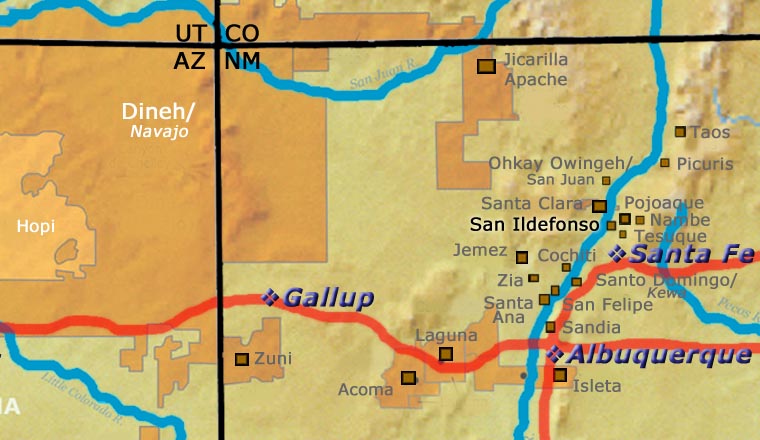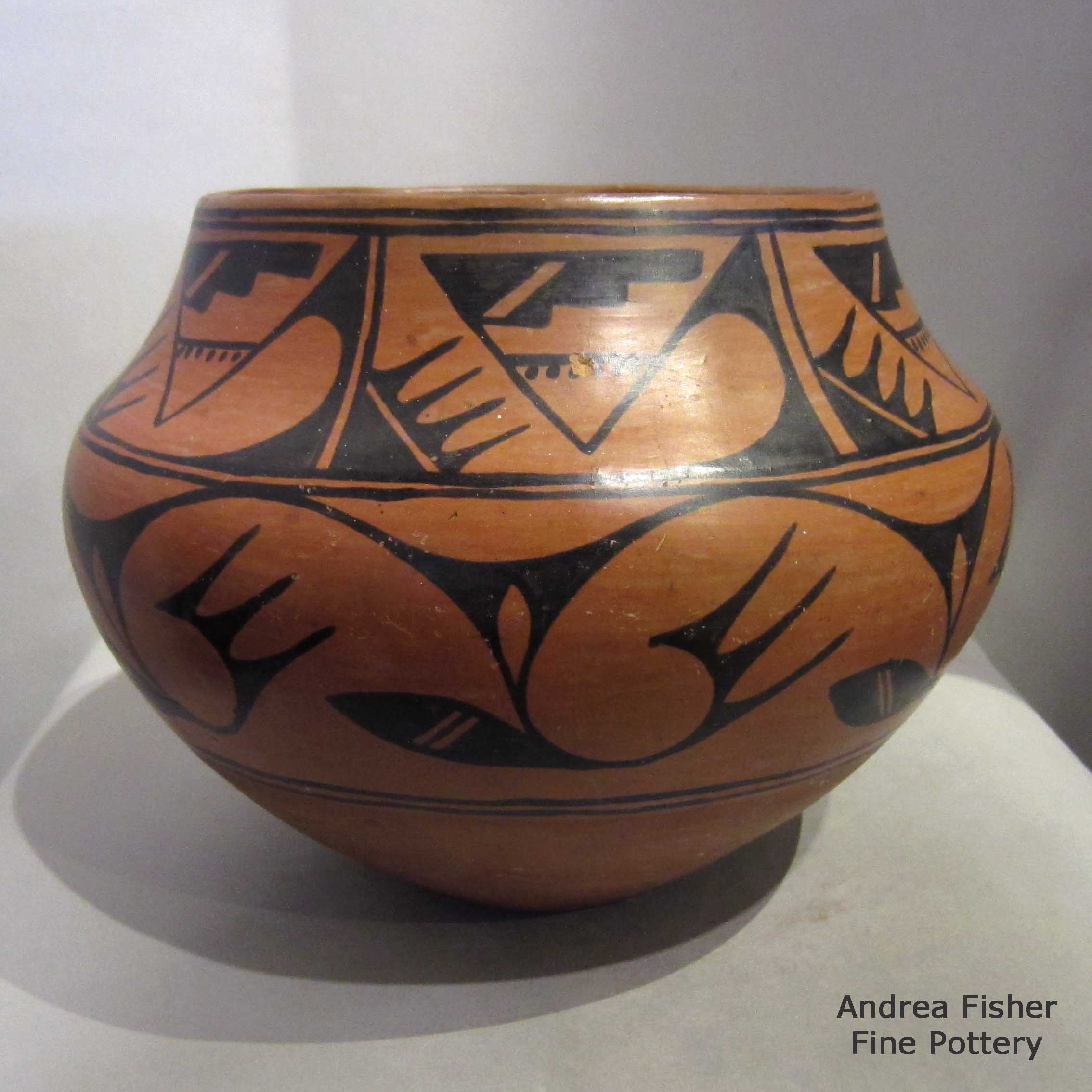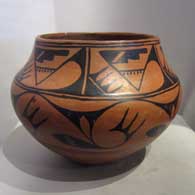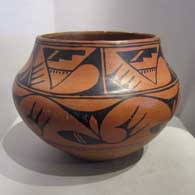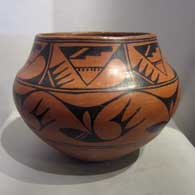
Tonita Roybal
San Ildefonso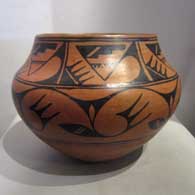
Tonita Martinez Roybal (1892-1945) learned how to make pottery the traditional way from her mother, Dominguita Pino, and she passed that learning on to her daughters. Tonita was producing pots for the marketplace from 1909 until she passed on in 1945.
Tonita worked mostly with redware and blackware jars and bowls. During her life she developed methods of using matte white and matte red paints on redware pots. She is probably most famous for her black-on-red and black-on-black jars and her polychrome redware. She also attained a measure of fame for her participation in pottery making demonstrations with Maria Martinez, Maximiliana Montoya, Ramona Gonzales and Desideria Montoya at the Museum of New Mexico in 1909. Tonita was one of the finest potters of the twentieth century. Her pottery rivaled Maria's. However, Maria did not paint her pieces while Tonita did. Tonita may even have painted some pieces for Maria. Maria and Tonita were also able to achieve the finest "deep luster" polish on their blackware.
Tonita's first husband was Alfredo Montoya, a painter whose mother, Nicolasa Peña Montoya, first encouraged Maria Martinez to make pots. Painting pots for several women potters, Alfredo was especially known for his birds, animals and flowers. After his passing, Tonita is known to have spent time studying the work of Hopi-Tewa potter Nampeyo of Hano. Perhaps in her process of creating at least one Sikyátki-style Hopi pot (now in the collection of the School for Advanced Research in Santa Fe) she cross-pollinated ideas with some Hopi potters. It is felt that she may have had some influence in the development of black-on-red pottery at Hopi which became more popular during the 1920s.
In 1920 she married Juan Cruz Roybal and the year after, he began painting some of Tonita's pots. After 1930 he was painting most of her pots. It was in 1935 that he began painting some Mimbres-inspired designs on her pots.
100 West San Francisco Street, Santa Fe, New Mexico 87501
(505) 986-1234 - www.andreafisherpottery.com - All Rights Reserved

San Ildefonso Pueblo
San Ildefonso Pueblo is located about twenty miles northwest of Santa Fe, New Mexico, mostly on the eastern bank of the Rio Grande. Although their ancestry has been traced to prehistoric pueblos in the Mesa Verde area, their most recent ancestral home is in the area of Bandelier National Monument, the prehistoric village of Tsankawi in particular. Tsankawi abuts the reservation on its northwest side.
A mission church was built in 1617 and named for San Ildefonso. Hence the name. Before that the village was called Powhoge, "where the water cuts through" (in Tewa). Today's pueblo was established as long ago as the 1300s. When the Spanish arrived in 1540, they estimated the village population at about 2,000.
That mission was destroyed during the Pueblo Revolt of 1680 and when Don Diego de Vargas returned to reclaim the San Ildefonso area in 1694, he found virtually all the Tewa people on top of nearby Black Mesa. After an extended siege the two sides negotiated a treaty and the people returned to their villages. However, the next 250 years were not good for them. The Spanish swine flu pandemic of 1918 reduced the pueblo's population to about 90. Their population has grown to more than 600 now but the only economic activity available on the pueblo involves creating art in one form or another. The only other work is off-pueblo. San Ildefonso's population is small compared to neighboring Santa Clara Pueblo, but the pueblo maintains its own religious traditions and ceremonial feast days.
San Ildefonso is most known for being the home of the most famous Pueblo Indian potter, Maria Martinez. Many other excellent potters from this pueblo have produced quality pottery, too, among them: Blue Corn, Tonita and Juan Roybal, Dora Tse Pe and Rose Gonzales. Of course the descendants of Maria Martinez are still important pillars of San Ildefonso's pottery tradition. Maria's influence reached far and wide, so far and wide that even Juan Quezada of the Mata Ortiz pottery renaissance in Chihuahua, Mexico, came to San Ildefonso to learn from her.
100 West San Francisco Street, Santa Fe, New Mexico 87501
(505) 986-1234 - www.andreafisherpottery.com - All Rights Reserved

San Ildefonso
$ CALL
ndsie5131xx
Black on red storage jar with geometric design
8 in H by 10.25 in Dia
Condition: Very good with some small chips
Signature: Unsigned, attributed to Tonita Roybal
Date Created: c. 1930
100 West San Francisco Street, Santa Fe, New Mexico 87501
(505) 986-1234 - www.andreafisherpottery.com - All Rights Reserved
